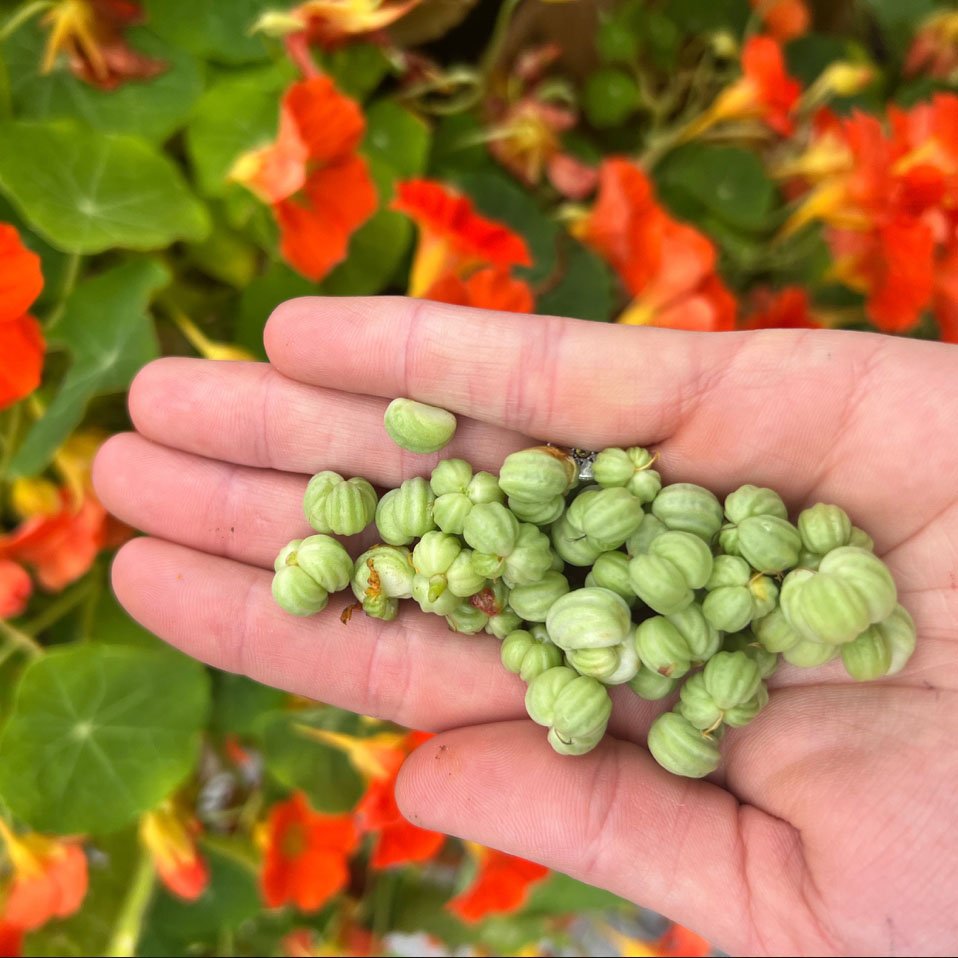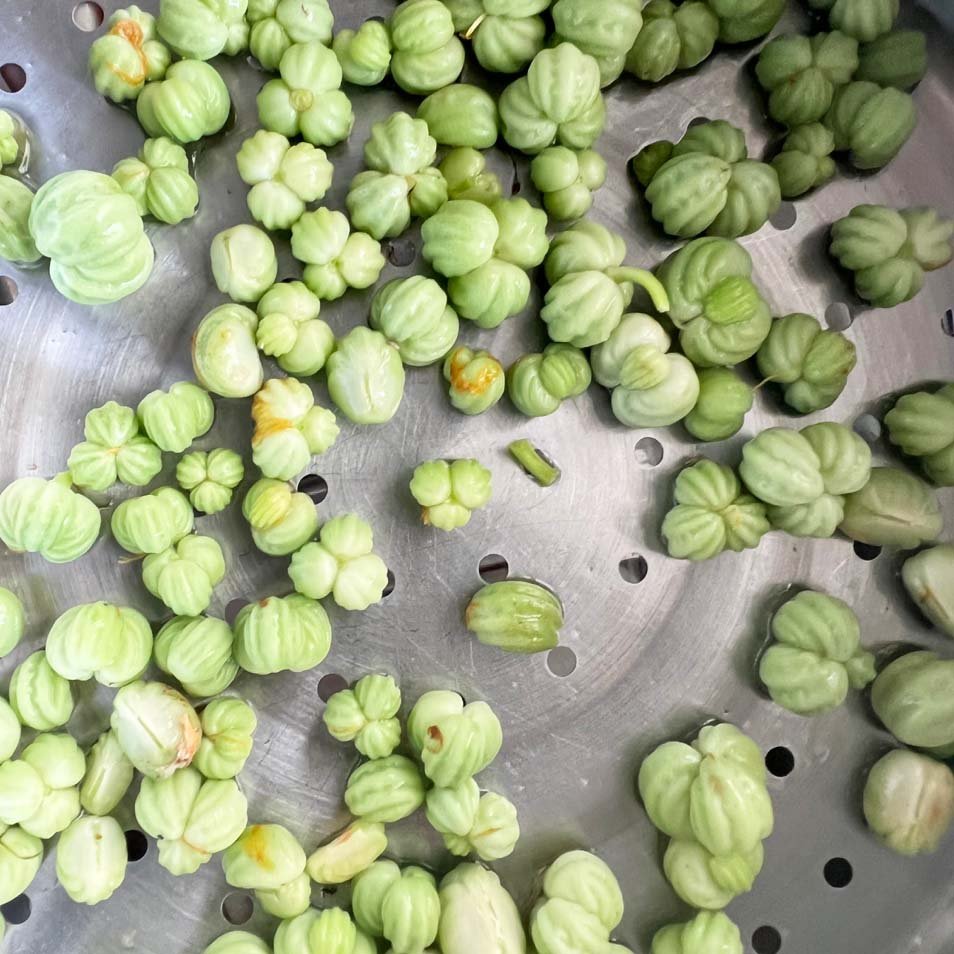Recipe: Nasturtium Capers
This is a great Cooler Than Compost recipe which makes the most of spring’s abundance, because did you know all parts of nasturtiums are edible, even the seed pods?
If you don’t have nasturtiums growing in your own garden, chances are you could find some poking through a fence on a walk in your neighbourhood. Try out our nasturtium vinegar recipe to use up the leaves, and save the pods for this delicious take on a pickled caper.
In all the weird and wonderful ways to use a nasturtium plant – this has got to be my favourite. Towards the end of the flowering season, seed pods pop up behind the head of the dying flower. Most often you’ll find them scattered on the ground but if you lift up the canopy of the plant, you’ll be able to find them ripe, green and still attached.
I highly recommend adding these pickled pods to a potato salad or any tomato-based pasta sauce.
Things to note:
- Don’t use the seed pods if they have turned brown. They definitely won’t taste great.
- Try not to mistake the seed pod for the bud of a new flower. We’ll attach a photo so you can’t mix them up!
- You will need one or two sterilised jars to store them in, check out our blog post on how to do this.
Time: Less than 30 minutes to prepare, then wait a few weeks for the best flavour
Ingredients:
- 1 cup nasturtium seeds, still firm and green,
- 1 cup white wine vinegar or 1/2 water and 1/2 apple cider vinegar – that just depends on the flavour of vinegar you’d prefer,
- 1 teaspoon kosher salt, or to taste,
- 5 to 8 peppercorns, slightly crushed.
Optional:
- Sprig of dill,
- Mustard seeds to taste.
Method:
1. Wash your nasturtium seeds and make sure there are no petals or leaves left in the mix.
2. Pop them into a sterilised jar and if desired, also add your optional dill, mustard seeds or other flavouring.
3. Fill a small saucepan with your chosen vinegar mix, salt and peppercorns and bring to the boil.
4. Pour pickling solution over the pods and seal lid.
5. Let them pickle for a couple of weeks somewhere out of the sun and then pop into the fridge after that.
They’ll last for about 6 months once refrigerated.



